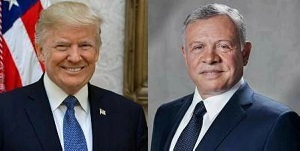ASE hits decade-high amid international market volatility
The Jordan Times
AMMAN — Global markets are navigating a phase of unusual contrasts, as regional stock exchanges, central bank decisions and commodity price trends converge to shape investor sentiment, experts say.
"Jordan’s Amman Stock Exchange (ASE) has recorded its strongest performance in more than a decade," said economic analyst Salameh Darawi in a statement to The Jordan Times.
"The surge comes despite the US Federal Reserve’s recent interest rate cut, which has sparked cautious debate over its global impact. Meanwhile, elevated gold and silver prices continue to reflect widespread economic uncertainty."
Darawi noted that between the end of 2024 and July 2025, the ASE’s market capitalisation rose by 26.31 per cent, reaching JD22.3 billion, its highest value since 2010. He added, "Average daily trading volumes also climbed by 83.15 per cent, reaching JD7.58 million."
The industrial sector has been the main driver of this growth, with phosphate and potash companies posting record results. The financial sector also gained momentum, as banks and investment firms expanded their activity, while the services sector showed more modest progress.
Foreign participation has played a key role in this upswing. By mid-September 2025, non-Jordanian holdings reached JD26.4 billion, with Gulf investors accounting for nearly a fifth of the total.
Kuwaiti investors increased their exposure by 42 per cent to JD1.48 billion, while Saudi and Bahraini stakes also grew significantly. Investment from outside the region accelerated as well, particularly from India and China.
This strong local performance coincides with shifts in global monetary policy. Earlier this month, the Federal Reserve cut its benchmark interest rate by a quarter percentage point, a move mirrored by the Central Bank of Jordan due to the dinar’s peg to the dollar.
The aim is to stimulate borrowing and encourage investment, though questions remain about its effectiveness.
"Inflation in the US remains above the Fed’s target, limiting its ability to continue cutting rates," said Ahmad Awad, founder and director of the Phenix Centre for Economic and Informatics Studies.
"In Jordan, the benefit depends on whether banks pass cheaper credit to businesses, and whether firms can convert it into sustained growth rather than temporary consumption."
Gold has hovered near record levels throughout 2025, reflecting geopolitical tensions and concerns about global economic stability, Awad added. "Silver has followed a similar pattern, buoyed not only by its status as a safe haven but also by growing demand from the renewable energy sector," he said.
For Jordan, these trends offer both opportunities and risks. Economist Waseem Hussein noted, "Rising gold prices strengthen reserves but can constrain local demand for jewellery. Lower interest rates, meanwhile, create potential for small and medium-sized businesses, if properly channelled."
The intersection of strong local equity performance, shifting monetary policy, and elevated commodity prices underscores the complexity of the current economic moment. Jordan, like many emerging economies, faces the dual challenge of capitalising on opportunities while preparing for volatility signalled by the persistent strength of gold and silver.
Latest News
-
 Syrian defense minister announces "comprehensive ceasefire" with Kurds
Syrian defense minister announces "comprehensive ceasefire" with Kurds
-
 King holds phone call with US president
King holds phone call with US president
-
 Crown Prince meets winners of Al Hussein Award for voluntary service
Crown Prince meets winners of Al Hussein Award for voluntary service
-
 Clashes erupt in Aleppo between Syrian army and SDF, dozens displaced
Clashes erupt in Aleppo between Syrian army and SDF, dozens displaced
-
 First round of Gaza talks concludes in ‘positive atmosphere': Egyptian media reports
First round of Gaza talks concludes in ‘positive atmosphere': Egyptian media reports